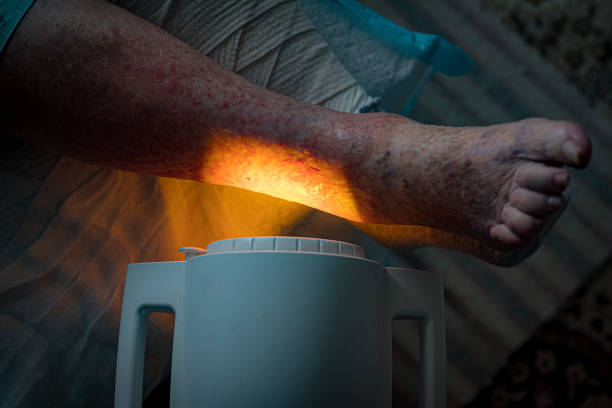Diabetes affects millions worldwide, and foot-related complications are among the most common issues. If not managed proactively, these problems can lead to severe health risks. In Singapore, the tropical climate adds an extra layer of complexity, making comprehensive foot care even more essential. Dr. Darryl Lim and team focus on helping patients maintain foot health and prevent complications with expert care tailored to their needs.

Understanding diabetic foot complications
Why Diabetic Foot Care is Essential
Diabetes can lead to nerve damage and poor blood circulation, making it harder for wounds to heal. Even minor cuts or blisters can escalate into infections or ulcers if left untreated. Comprehensive foot care focuses on preventing these issues before they become serious and ensuring patients maintain healthy feet through regular monitoring and early intervention.
Common Diabetic Foot Conditions
Diabetic patients are more prone to certain foot conditions, including:
- Diabetic Neuropathy: Nerve damage that reduces sensation, making it harder to notice injuries.
- Peripheral Artery Disease (PAD): Narrowing of blood vessels that limits blood flow to the feet, slowing healing.
- Foot Ulcers: Open sores that develop from untreated injuries or pressure points.
- Infections: High glucose levels provide an ideal environment for bacterial and fungal infections.
Each of these conditions requires specialized care to prevent complications and support long-term foot health.
Preventive Measures for Diabetic Foot Care
Regular diabetic foot screenings
Regular screenings are crucial for catching potential problems early. A diabetic foot specialist can identify abnormalities before they develop into serious complications, offering personalized recommendations based on your specific needs.
Daily Foot Care Routine
Taking care of your feet every day can significantly lower the risk of complications. Here’s what a good routine looks like:
- Inspect Your Feet Daily: Look for cuts, blisters, redness, or swelling.
- Wash and Moisturise: Clean your feet daily and apply moisturizer to prevent dry, cracked skin.
- Trim Nails Properly: Cut nails straight across to avoid ingrown toenails.
- Wear Supportive Footwear: Choose shoes that provide adequate support and don’t create pressure points.
Incorporating these habits can help keep your feet healthy and reduce the risk of serious conditions.

Diabetic Foot Treatment Options
Medication and wound care
For wounds or ulcers, prompt treatment is essential to avoid infection. Treatment may include antibiotics and specialized wound care techniques that promote healing and reduce the risk of complications.
Custom Orthotics and Footwear
Patients at high risk of foot problems may benefit from custom orthotics or specialized footwear. These help distribute pressure evenly across the feet, reducing the likelihood of ulcers and blisters.
When to See a Diabetic Foot Specialist
Recognizing warning signs early
Early intervention is key to managing diabetic foot conditions. Consider seeing a specialist if you notice:
- Loss of sensation or tingling in your feet.
- Cuts, blisters, or sores that aren’t healing.
- Swelling, redness, or warmth in any part of your foot.
- Changes in skin color, such as black or blue patches on your toes.
A diabetic foot specialist like Dr. Lim can provide the expertise needed to address these issues early and prevent complications.
Importance of Diabetic Foot Care in Singapore
Why diabetic foot care matters in Singapore
Singapore’s warm, humid climate can increase the risk of bacterial and fungal infections, particularly for diabetic patients. Sweat and moisture create an ideal environment for these conditions, making proper foot care even more important. With tailored advice and proactive care, a diabetic foot specialist can help you navigate these challenges and maintain healthy feet.
Conclusion
Diabetic foot care is about staying proactive to prevent complications and maintain overall health. Regular screenings, a good daily care routine, and expert guidance are key to avoiding serious issues. Dr. Darryl Lim and team provide specialized diabetic foot care to help patients manage their risks and enjoy healthier feet.
Take the first step toward better foot health by scheduling a consultation today. Let our team guide you toward a personalized care plan that works for your lifestyle and needs.







